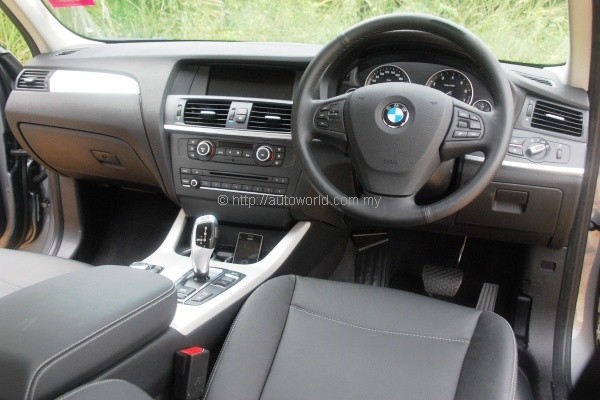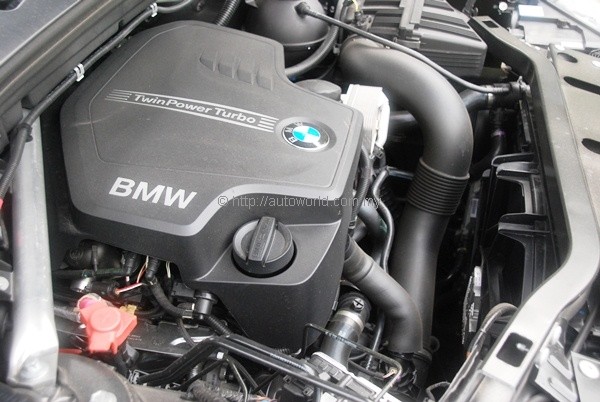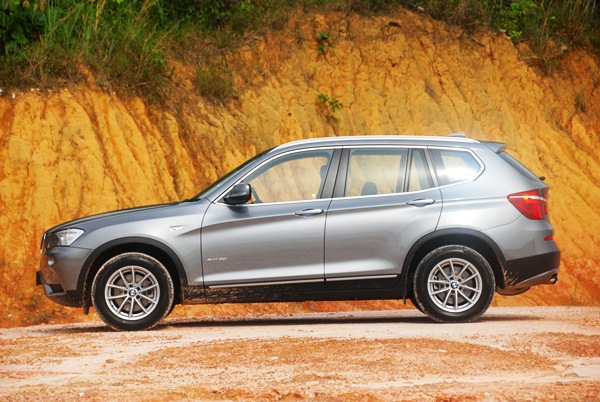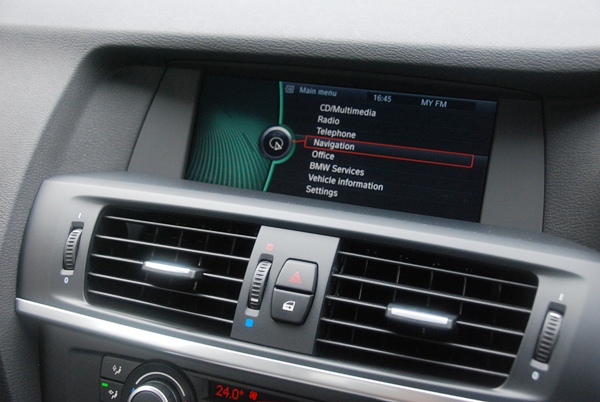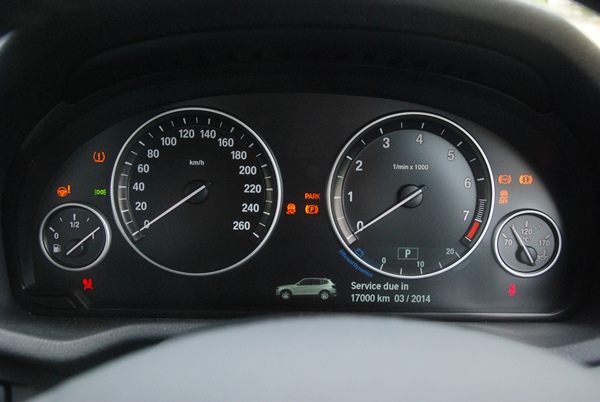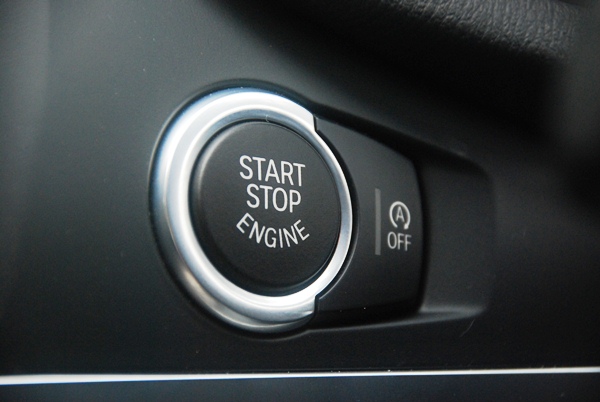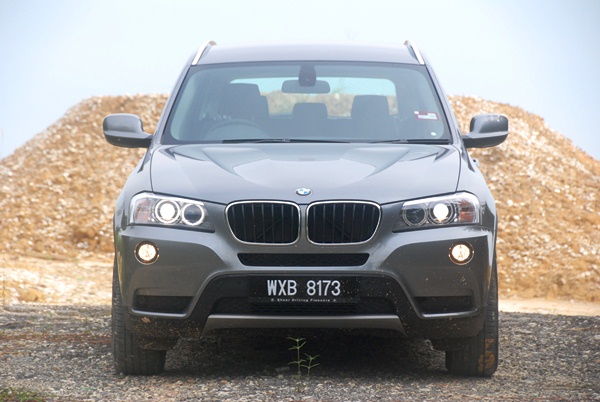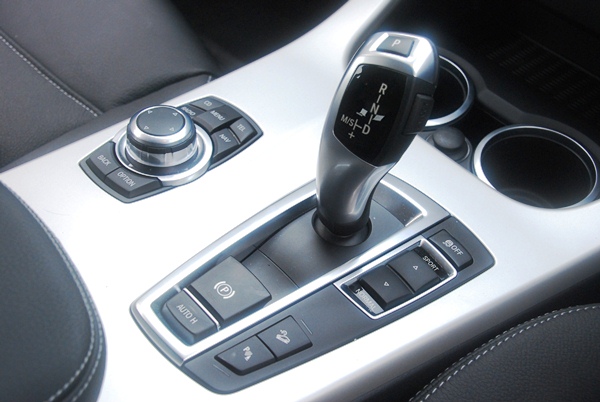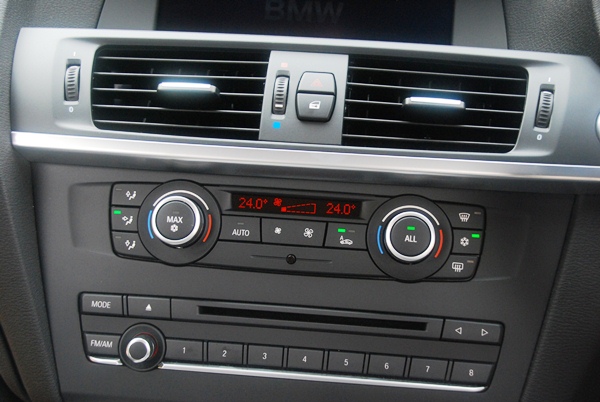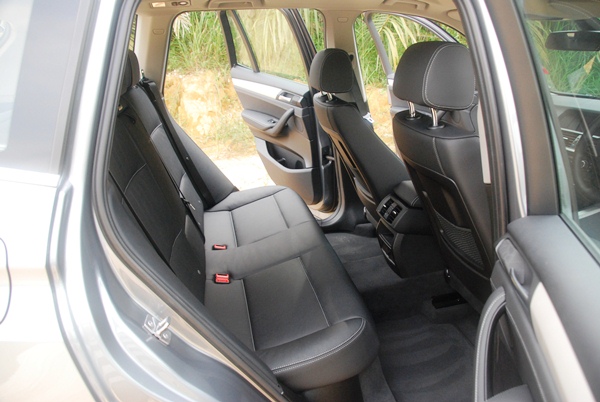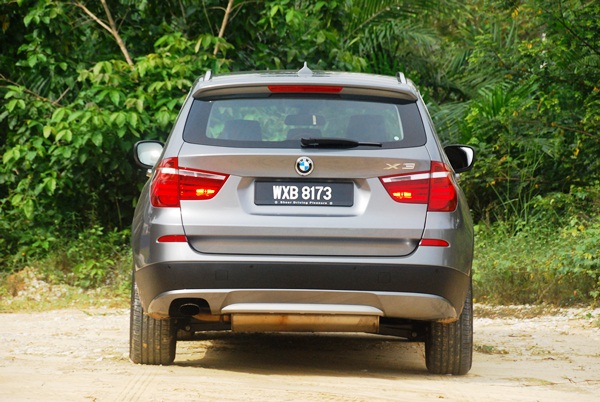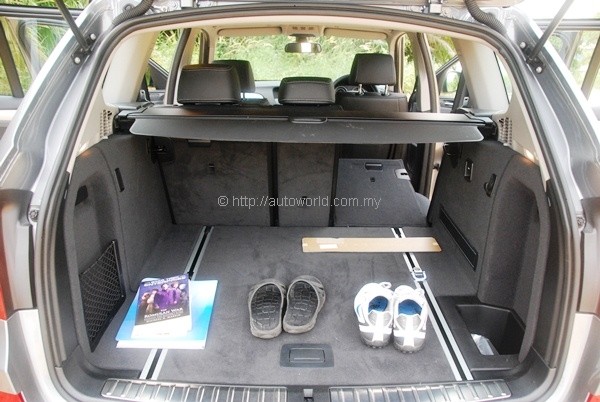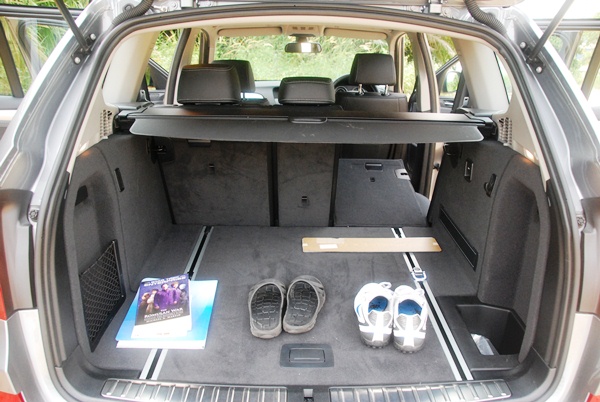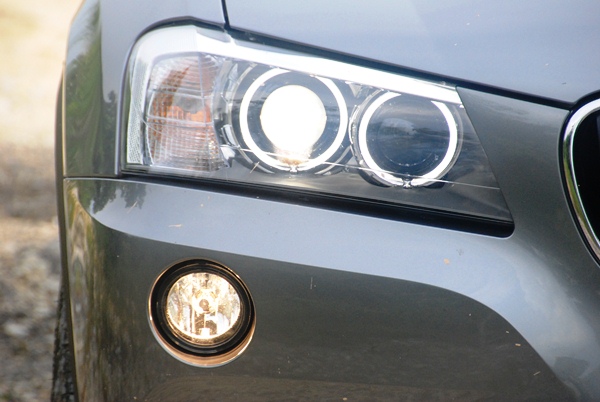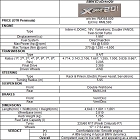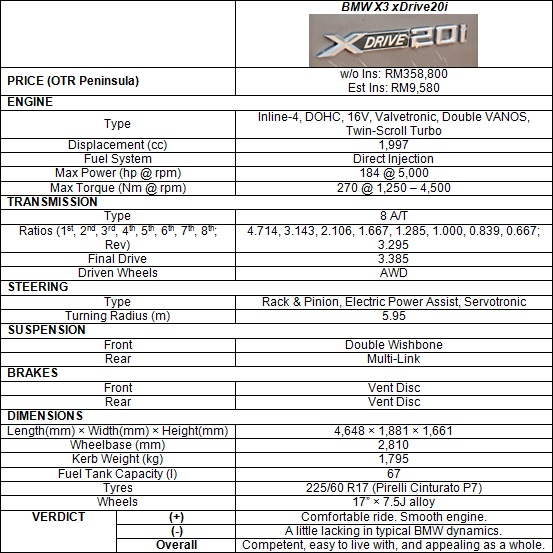BMW X3 xDrive20i Test Drive Review
The BMW X3 has been launched in Malaysia for over a year now, although it was only this year that a petrol-powered model, the xDrive20i, was added to the mix. Powered by BMW’s new N20 2.0-litre TwinPower Turbo direct injection engine, the petrol-driven X3 is priced a nice round RM10k north of its diesel sibling, the xDrive20d, at RM358,800 on-the-road before insurance.
Both versions are almost identically specced in terms of equipment, but the petrol model gets slightly more stuff to justify its higher price tag. One must remember that a diesel engine actually costs more than a comparable petrol motor, so in the X3’s case, the xDrive20i tested here gets Dynamic Damper Control, Performance Control, and satellite navigation, all of which the diesel model does without. Additionally, the petrol variant’s 8.8″ central screen is larger than the diesel’s 6.5″.
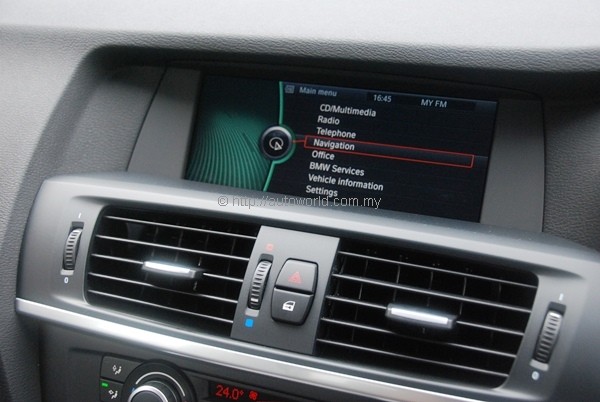 |
| iDrive comes complete with sat nav here in the X3. |
Like its diesel sibling, the X3 xDrive20i produces 184hp of peak power, albeit delivered 1,000rpm later at 5,000rpm. There is less torque available, but 270Nm spread between 1,250 and 4,000rpm remains decent mid-range shove. Technologies incorporated in this engine, which now powers all BMWs with a ’20i’ badge, include Valvetronic, Double VANOS, direct injection, Brake Energy Regeneration, and Auto Start/Stop.
As mentioned in reviews of several other models, BMW’s Auto Start/Stop still requires a lot work in honing its refinement. Every restart is greeted by a shuddering jolt of its cabin that does not befit a car priced north of RM350k. Audi’s auto start/stop system feels much smoother, although it must be said that only the Japanese have managed to really nail it in terms of giving us an auto start/stop smooth enough that the option to switch it off is not really required. On the BMW, I’d stick a piece of duct tape on the system’s deactivation switch.
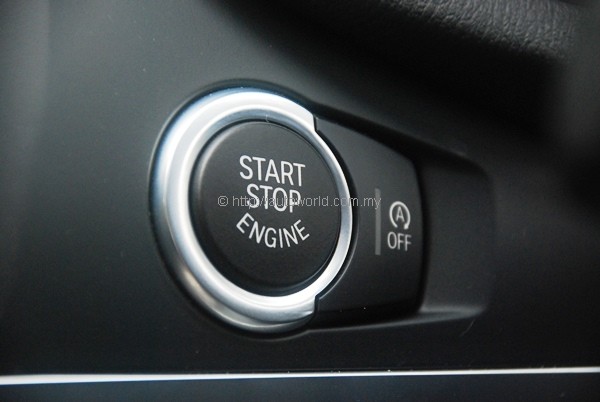 |
| BMW’s auto start/stop still lacks refinement, although the 20i is smoother than its diesel brothers. |
Unlike the creamy smooth straight sixes that BMW is renowned for, Munich’s new blown four-pot is a less keen of a revver, preferring to do most of its good work in the mid-range under part-throttle loads. This makes the X3 more of a cruiser. Go easy on the throttle, and serene progress is yours to enjoy all the way to its 210kph top speed; gun it hard, progress is less satisfying with engine acoustics hardly inspiring past 5,000rpm.
The pleasing aspect of this engine, however, is that in its peak torque window, progress feels smooth and linear, a notable contrast to the same engine’s more brutal character in its 245hp state of tune that power the ’28i’ models. The ’20i’ engine also has less lag to contend with, thanks to lower boost levels, and it has an effortless feel about it, a usual characteristic of engines tuned well below their full potential.
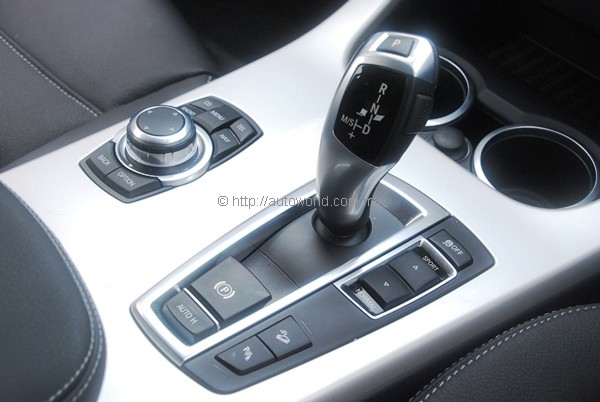 |
| 8-speed automatic from ZF. Centre console could use a bit more storage space. |
Just as turbocharged four-cylinders are starting to rule the roost of BMW’s line-up, ZF’s 8-speed automatic transmission is gaining just as much prominence and it is standard fitment on both variants of the X3. There are no paddle shifts to flick, but that’s not big a deal, as the transmission’s control unit is reasonably intelligent when left to its own devices, and BMW’s inverted -/+ gear lever arrangement for manual overriding is brilliantly intuitive to use when situations really call for it.
At the four corners, BMW has shod the X3 with 60-series tyres wrapping around 17-inch alloys, which is uncharacteristically conservative based on the company’s recent track record. Although this selection has given the X3 a somewhat undertyred appearance, there are positive implications to its ride – the X3 feels infinitely more pliant than the bone-shattering X1, although it is also admittedly not as sharp at the helm. This is likely due to the X3’s combination of a taller height, electric power steering, and thicker tyre side walls.
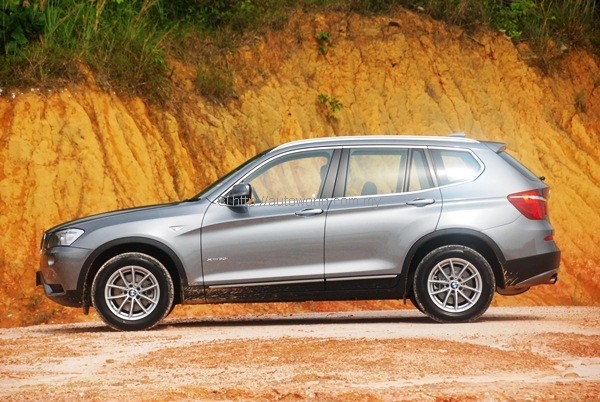 |
| Smaller rims make the X3 look less aggressive, but the reward is a pliant ride. |
Where the X1 seemingly defies the laws of physics under hard driving like a hot hatch, the X3 plays well within their boundaries. There is noticeably more lean, even with the adaptive dampers set to ‘Sport’, and also less feedback from the steering, so you are less emboldened to go balls-out at corners as a result, regardless of whatever brilliance you know BMW’s xDrive system is capable of. The X3 is clearly set up with a comfort bias, and understandably so, when you consider that it is likely to appeal to a very different crowd than, say, an M3.
The X3 offers less in terms of driving engagement than you would expect of a BMW, but makes up for that in an unexpected area – practicality. The dashboard is typical BMW – dark colours with controls arranged in a very functional business-like manner. Build quality is excellent but there is not as many small item storage compartments as I would like (a typical BMW weakness), but you do have a huge luggage area to carry items around – 550 litres with rear seats up, and 1,600 litres with ‘em down.
Compared to the X1, or even the previous X3 for that matter, the current X3’s bigger size and improved refinement makes it a more appealing prospect to live with day-to-day. Its reasonably compact footprint also houses a decently sized cabin and luggage area, making it rather practical, and it fits the bill as a more modest alternative to the bigger and more muscular X5. Despite falling slightly short of the dynamic appeal that we’ve grown accustomed to with most BMWs, the X3 has a pretty balanced set of abilities that make it a very competent all-rounder.
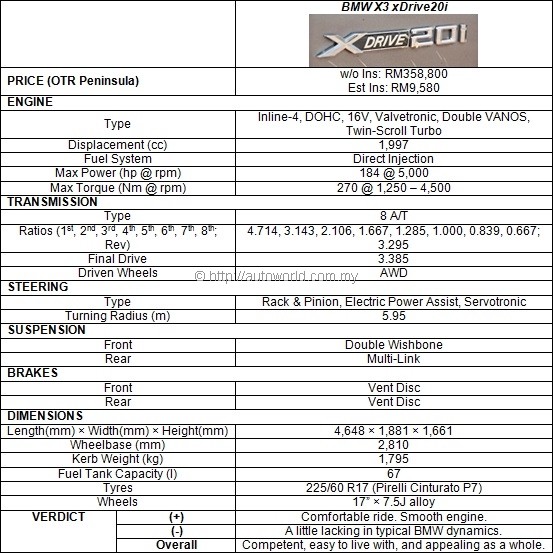 |






